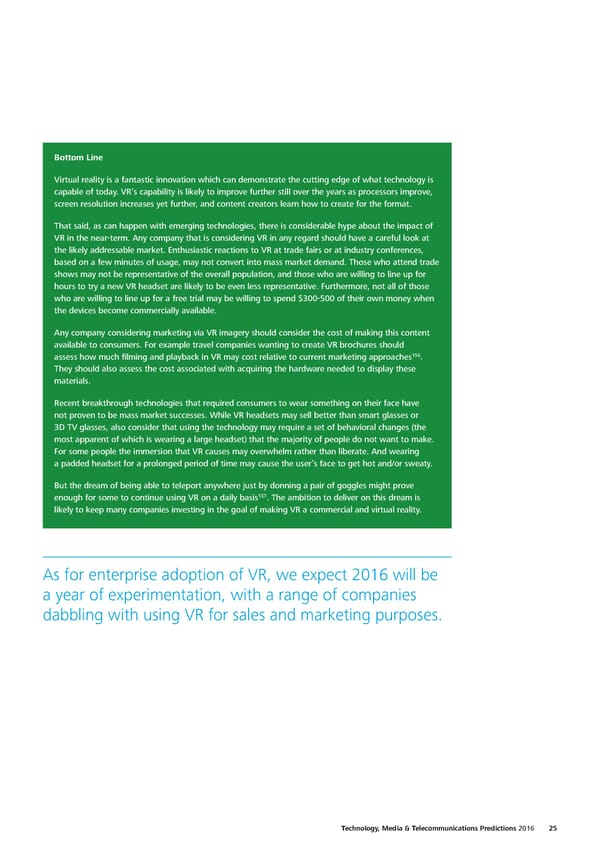Bottom Line Virtual reality is a fantastic innovation which can demonstrate the cutting edge of what technology is capable of today. VR’s capability is likely to improve further still over the years as processors improve, screen resolution increases yet further, and content creators learn how to create for the format. That said, as can happen with emerging technologies, there is considerable hype about the impact of VR in the near-term. Any company that is considering VR in any regard should have a careful look at the likely addressable market. Enthusiastic reactions to VR at trade fairs or at industry conferences, based on a few minutes of usage, may not convert into mass market demand. Those who attend trade shows may not be representative of the overall population, and those who are willing to line up for hours to try a new VR headset are likely to be even less representative. Furthermore, not all of those who are willing to line up for a free trial may be willing to spend $300-500 of their own money when the devices become commercially available. Any company considering marketing via VR imagery should consider the cost of making this content available to consumers. For example travel companies wanting to create VR brochures should 156. assess how much filming and playback in VR may cost relative to current marketing approaches They should also assess the cost associated with acquiring the hardware needed to display these materials. Recent breakthrough technologies that required consumers to wear something on their face have not proven to be mass market successes. While VR headsets may sell better than smart glasses or 3D TV glasses, also consider that using the technology may require a set of behavioral changes (the most apparent of which is wearing a large headset) that the majority of people do not want to make. For some people the immersion that VR causes may overwhelm rather than liberate. And wearing a padded headset for a prolonged period of time may cause the user’s face to get hot and/or sweaty. But the dream of being able to teleport anywhere just by donning a pair of goggles might prove 157. The ambition to deliver on this dream is enough for some to continue using VR on a daily basis likely to keep many companies investing in the goal of making VR a commercial and virtual reality. As for enterprise adoption of VR, we expect 2016 will be a year of experimentation, with a range of companies dabbling with using VR for sales and marketing purposes. Technology, Media & Telecommunications Predictions 2016 25
 Technology, Media & Telecommunications Predictions Page 31 Page 33
Technology, Media & Telecommunications Predictions Page 31 Page 33